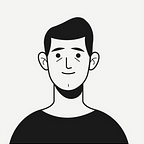Designer, The Odyssey
“A person who has been through bitter experiences and travelled far enjoys even his sufferings after a time”
— Homer, The Odyssey
Long story short
It comes as no surprise that not many design companies are focusing efforts on carrier path and development. Either because, they don’t have the time and resources required (small and medium size companies) or they have the time and resources (big companies), but they tend to standardise the process so much thus they lose the personalised approach.
Because of that, I’ve developed and tested out a simple tool that might help designers to set up their professional goals and aspirations.
It’s called “The Odyssey”.
The Odyssey: Overview
To understand where we’re going, we need to know from where we’re coming from. The Odyssey aims to pinpoint and get deeper understanding about key domain drivers in career development. We should identified eight key drivers or pillars for a particular domain.
Bearing this in mind, let’s consider visual designers. The key drivers for them could be:
- Visual Thinking
This implies visual communication, styling and problem-solving through the use of visual methodologies and tools. - Presentation
Be able to present the information clearly in order to get your message across the board. Ensure you can explain rationally why your design is right for the brief and creative challenge. - Production
Efficiency to manage production tasks to deliver the desired outcome. - Interaction Design
Be aware of key aspects to create significant relationships between people and the products and services that they use. - Tech awareness
Ability to access and interact with technology in a meaningful way. - Business awareness
Understand that whenever a company designs a new product, service or experience, essentially it’s designing its business. - Team management
Ability to coordinate a group of individuals to perform a task. - Ideation
Potential to create or think things up.
The footprint: Experience Wheel
Footprint —
def: Impression left by a foot or shoe on the ground or a surface.
I would like to introduce to you “The Experience Wheel” a wheel with eight axes representing the domain drivers.
Setting up the domain drivers
The eight key domain drivers have to be positioned around the wheel, one per axis. Then, ask the designer to place on the wheel (low, medium, high, exe) where it sees for each driver. First ask for the present, later for future.
The manager has to do the same process regarding where it sees “the designer” in the scale
In the end the result is a “footprint” or visual representation of thoughts, feelings and aspirations from both sides. This is the starting point for a nice conversation between designer and manager with the aim to create a final version. Then we can set up activities in order to close the gap between the present situation and the future desired state “the challenge”.
Tips about the footprint
- Be realistic: Is an anual process, so not focus your efforts on all axes. Choose 3 or 4 in order to be sure about the achievement.
- Hatch a plan based on: the strengths you have, not wish you had.
- Follow up and trace the performance: Modify it in case you need it either because projects are not aligned or aspiration change.
- Strike out of your comfort zone: Be brave, strive for the possible/impossible
- Support goals achievement: It’s difficult to remain truly enthusiastic about something for years to come unless you have a genuine and lasting interest.
That´s all folks. Thank you for reading until here….
